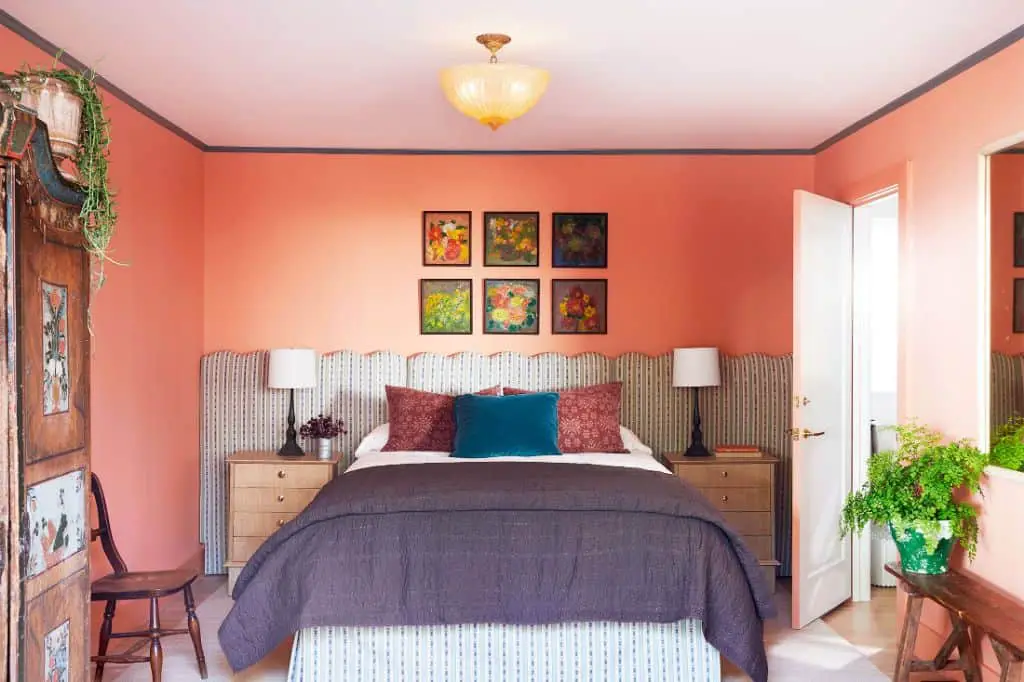Dark blue is often considered a popular and versatile color choice for rooms. When used thoughtfully, dark blue can create stylish, soothing, and cozy spaces. However, like with any bold color, dark blue also comes with some considerations. Understanding the pros and cons of using dark blue as a room color can help you determine if it is the right choice for your space.
Pros of Using Dark Blue
Here are some of the benefits that come with using dark blue as a room color:
- Soothing and calming – Dark blue evokes feelings of tranquility and relaxation. The cool tones are often described as peaceful and calming, making dark blue a great choice for bedrooms, meditation spaces, spas, etc.
- Sophisticated and stylish – Dark blue is associated with depth and intelligence. Using it in rooms creates an elegant, refined vibe. The color works well in formal dining rooms, studies, libraries, etc.
- Versatile – Despite being a bold color, dark blue works with a variety of decor styles from modern to traditional. It pairs nicely with other colors like white, beige, gray, yellow, and can add depth when combined with lighter blues.
- Timeless – Dark blue has been a popular interior color choice for decades. Unlike trendy colors, dark blue has staying power and is unlikely to feel dated over time.
- Make a statement – Using dark blue on walls or as accent pieces is an easy way to add drama and visual interest to a space.
Cons of Using Dark Blue
While the pros are plentiful, there are also some potential downsides with using dark blue:
- Can feel cold – Darker blues may read as cold or icy in some spaces, especially if used extensively. This can be countered by pairing it with warm metals, wood tones, and textiles.
- Light absorption – Like any dark color, dark blue will absorb light rather than reflect it. This can make rooms feel darker and smaller. Proper lighting is key for balance.
- Highlight flaws – Darker colors emphasize anything on walls from dents and scratches to uneven textures. Wall prep and high-quality paint finish are important.
- Difficult to change – Going lighter after using a dramatic dark blue can be challenging. It often requires multiple coats of paint for proper coverage.
- Limiting – While beautiful, dark blue is a bold choice. Those who tire of colors quickly or like change may find an extensive use of dark blue too limiting.
Best Rooms for Dark Blue
So where can you best take advantage of dark blue? Here are some rooms where it really shines:
Bedrooms
Dark blue is an extremely popular color for master and kids’ bedrooms. The cool tranquil tones promote rest and relaxation. Dark blue works well on accent walls, headboards, wallpaper, bedding, and furniture upholstery in bedrooms.
Bathrooms
From navy to indigo, dark blues pair beautifully with white in bathrooms. It provides an anchor color that keeps the space feeling open and airy. Use it on walls or as accents through tiles, rugs, shower curtains, and accessories.
Dining Rooms
Sophisticated dark blue dining rooms are timeless and elegant. The color scheme promotes enjoyable conversations over food. Pair a dark blue dining room with formal furniture, chandeliers, and china patterns.
Libraries & Studies
What better color for a library or study than classic dark blue? Use it on built-in bookshelves or walls to create a refined intellectual vibe in workspaces and reading nooks.
Living Rooms
While bold, dark blue can still work surprisingly well in living rooms. The key is balancing it with lighter furniture, decor items, and plenty of natural light. Use dark blue conservatively in main living areas.
Tips for Decorating With Dark Blue
Ready to use dark blue in your space? Keep these tips in mind:
- Test samples – Look at dark blue samples on walls at different times of day. Ensure the color reads well in both natural and artificial light.
- Accent walls are safest – Paint one wall dark blue to create an accent before committing to it for an entire room.
- Add contrast – Anchor dark blue with crisp white trim for contrast. Layer on neutral furniture and decor for balance.
- Repeat colors – Bring in shades like light blue, green, and purple to reinforce the dark blue and add interest.
- Warm it up – Incorporate warm metal finishes, wood tones, and cream accents to keep a dark blue room from feeling cold.
- Control light – Use shades and dimmers to adjust natural light. Layer on lamps and sconces to cast a warm glow against dark blue at night.
Conclusion
Dark blue is a flexible, sophisticated color that can look fantastic in a variety of rooms. It works best when used thoughtfully through accents, balancing paint colors, proper lighting, and warm decor. For those looking to make a dramatic statement, dark blue is a great color option to consider for your space.


